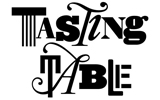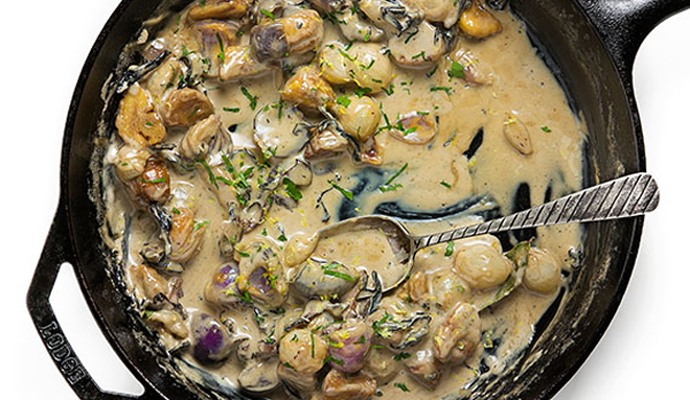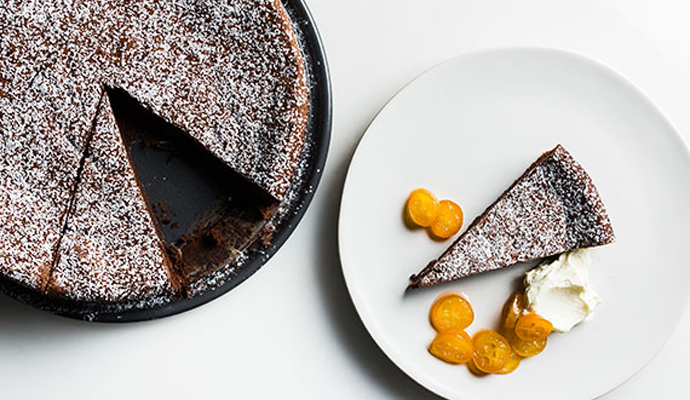How to cook with fresh chestnuts
You're going to need a paring knife — and a bit of patience


I blame Nat King Cole's "The Christmas Song" for ingraining this idea that we're all supposed to be roasting chestnuts on an open fire during the holidays. Show of hands: How many people have actually roasted, let alone tasted, a fresh chestnut? Also, if you live in New York City like me, how many of you have an open fire available?
I, for one, was never too interested in working with the stubborn nut. It was always more of an afterthought for me, like cranberry sauce and fruitcake, holiday food items that we always put out but don't always understand or appreciate.
(More from Tasting Table: Time (of year) to make the doughnuts)
The Week
Escape your echo chamber. Get the facts behind the news, plus analysis from multiple perspectives.

Sign up for The Week's Free Newsletters
From our morning news briefing to a weekly Good News Newsletter, get the best of The Week delivered directly to your inbox.
From our morning news briefing to a weekly Good News Newsletter, get the best of The Week delivered directly to your inbox.
Admittedly, my first encounter with chestnuts didn't go so well. It was early in my culinary career, at the ripe age of 14, when I roasted them (in an oven, mind you); within 10 minutes or so, I started to hear explosions from the oven, akin to popcorn popping. Of course, I had forgotten to pierce the chestnut's skin to allow the steam to release. What resulted was a mess and no popcorn.

It wasn't until a few years ago that I got chestnuts on the brain again, when I had a taste of an unbelievably savory chestnut and mushroom velouté that shed new light on how I view chestnuts.
So I started playing around with fresh ones, and working with them isn't as hard as you might think. Here's how to attack the peeling process: Use a sharp paring or utility knife to score across each chestnut's rounded side. Soak the chestnuts in water for a minute or so, then drain them and heat them in the microwave for one minute. After they're cool enough to handle but still warm, squeeze and peel them from their shell. And you're ready to roast or, in this case, sauté.
(More from Tasting Table: Holiday recipes and tips)
A free daily email with the biggest news stories of the day – and the best features from TheWeek.com
I reinterpreted the flavors from the sauce I mentioned earlier into a condiment that fits somewhere between a compote and a gravy (see the recipe). Onions are roasted in the oven until tender, before being added to mushrooms that have been sautéed with cognac. Chestnuts, bay leaves, thyme and heavy cream are then added. Once the sauce has simmered and thickened, it's topped with a sprinkling of parsley and lemon zest. It can go on roast meats or vegetables, but it seems to work best on thick pieces of crunchy bread that can soak up some of the sauce.

Of course, if cooking with fresh chestnuts still seems like a lot of work, I've also come up with a flourless chocolate cake that incorporates that of-the-moment chestnut flavor by using canned purée (see the recipe). The brownie-like cake is served with a sweet-tart kumquat compote and a dollop of mascarpone cream — it absolutely deserves a spot on your holiday table.
(More from Tasting Table: Winter wine cellar)
With a little patience and a few learning curves in the kitchen, I've learned to not only appreciate the sweet and fragrant chestnut and its crumbly texture but actually enjoy it. And hopefully you will, too.
Tasting Table is a culinary lifestyle brand that obsesses over what to eat and drink so you don't have to. It's like having a foodie best friend to distill the culinary world into must-do, must-eat, and must-know recommendations, on everything from the best Thai in the Village to the top tequila pours in Outer Mission. Hungry yet?
-
 US citizens are carrying passports amid ICE fears
US citizens are carrying passports amid ICE fearsThe Explainer ‘You do what you have to do to avoid problems,’ one person told The Guardian
-
 All roads to Ukraine-Russia peace run through Donetsk
All roads to Ukraine-Russia peace run through DonetskIN THE SPOTLIGHT Volodymyr Zelenskyy is floating a major concession on one of the thorniest issues in the complex negotiations between Ukraine and Russia
-
 Why is Trump killing off clean energy?
Why is Trump killing off clean energy?Today's Big Question The president halts offshore wind farm construction